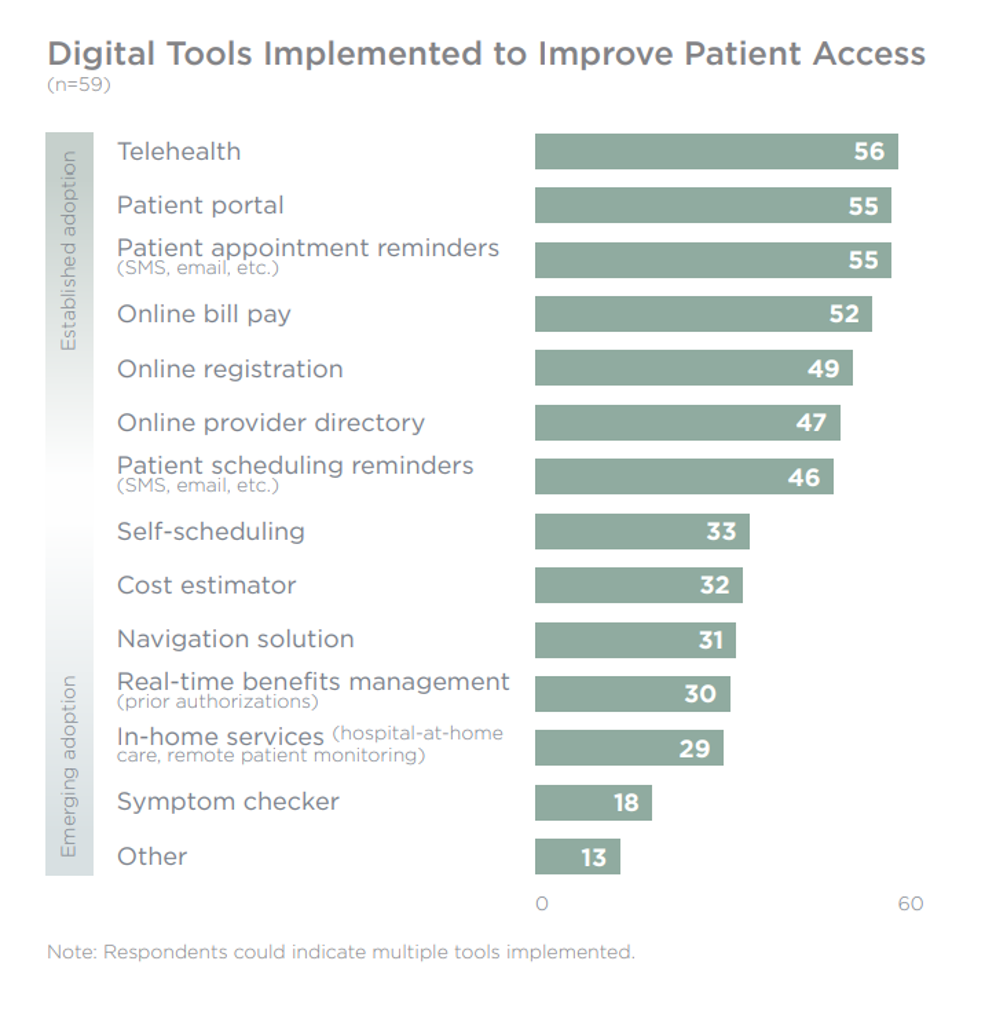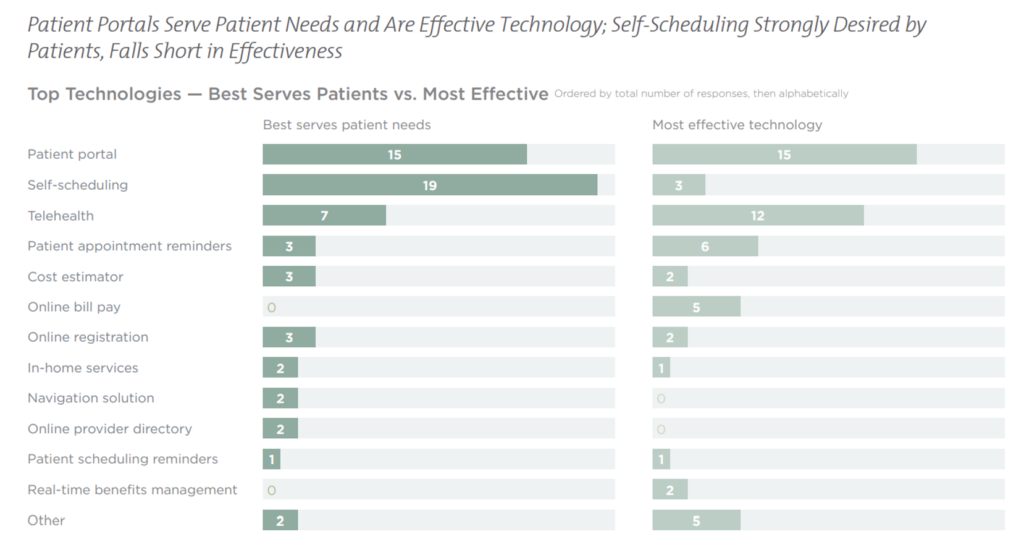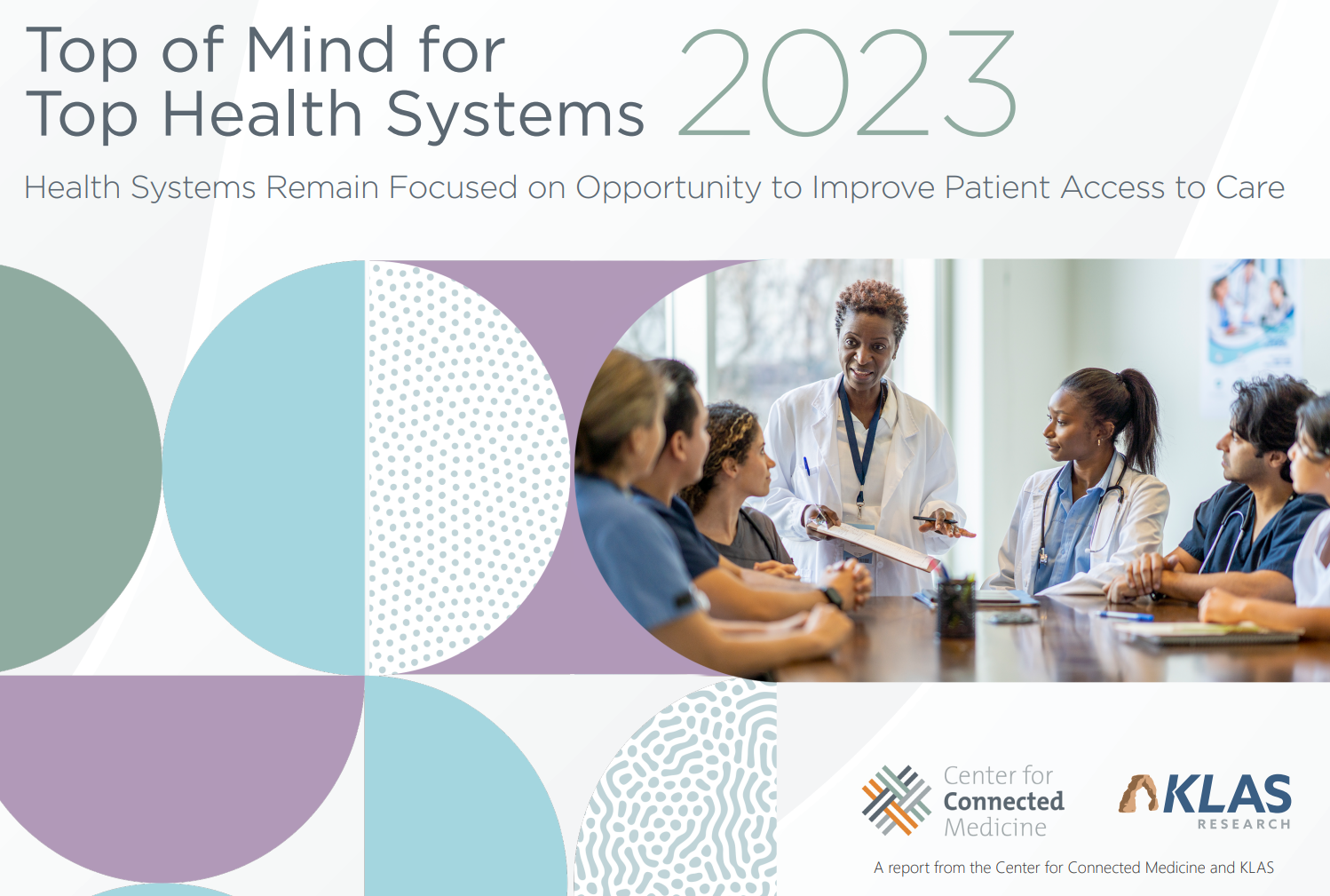Among all of the challenges health care providers will face in 2023, digital health tools could have the greatest potential to improve patient access, according to the issues most Top of Mind for Top Health Systems 2023 from UPMC. the Center for Connected Medicine, Nokia and KLAS Research. KLAS surveyed the views of 61 health system leaders to assess their perspectives on health care access, costs, telehealth, and artificial intelligence looking toward the next year of health care operations.

The challenge of patient access is emerging as top-of-mind for CxOs some of whom have identified C-Suite roles to address the issue.
The second chart ranks the digital tools the 61 healthcare leaders are using to improve patient access to care. Top-adopted tools included telehealth, patient portals, patient appointment reminders, and online bill pay adopted by over one-half of health systems leaders. Online registration, provider directories, and patient scheduling reminders have reached nearly one-half of health systems’ use for expanding patient access.
Note that in-home services such as hospital-at-home and remote patient monitoring are being used by roughly 1 in 5 health systems in this study.
That’s the supply side of digital tech use for bolstering patient access.

From the patient-demand point of view, we can see a gap between what best serves the patient compared with what is currently the most effective tool.
Patient portals appear to have the best match between serving patient needs and being effective.
Telehealth appears to “over-perform” based on this small sample of perceptions among health care leaders, while scheduling may be under-delivering in terms of effectiveness.
While a relatively small study sample, this study gives us important food for thought in terms of direction and information for planning digital health investments among health systems over the coming year.





 Thank you FeedSpot for
Thank you FeedSpot for